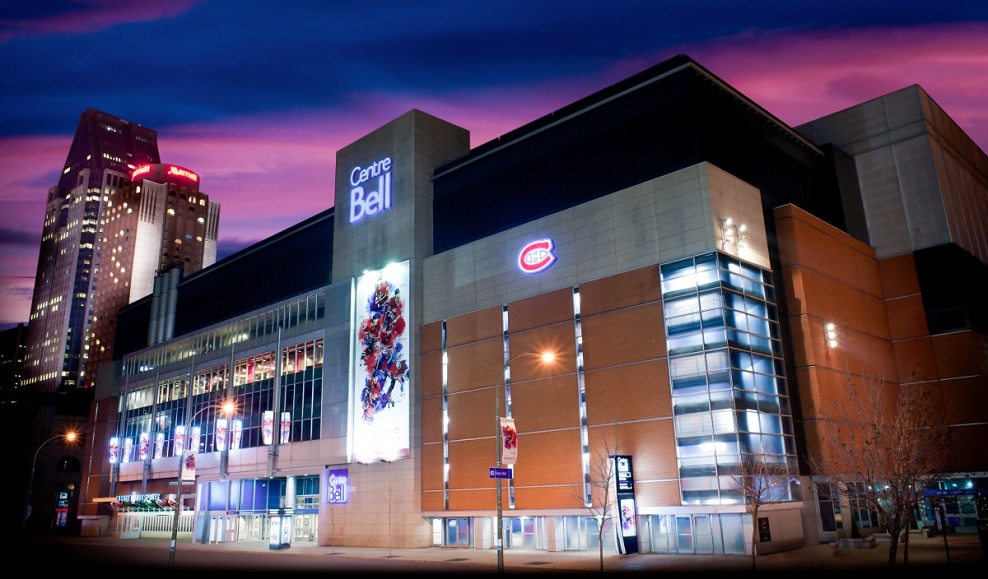If you’re a Montrealer over 40, you probably still get a knot in your stomach every time you walk past the old Forum.
Once a shrine to hockey’s greatest moments, today it’s a movie theatre and shopping complex with a bowling alley thrown in for good measure. It’s hard not to think that this city’s most sacred sporting ground was desecrated the day the Zambonis rolled out for the last time in 1996.
For Habs fans, when the Forum closed, it wasn’t just an arena that was being replaced. It was the heart of a community that had watched the Canadiens win 22 of their 24 Stanley Cups under its roof. From Maurice Richard to Guy Lafleur, the legends kept writing their names into the team’s rafters with fans sitting practically on top of the ice. That intimacy gave the Forum its edge.
Go listen to those Maurice Richard ovations and tell me it doesn’t give you goosebumps …
Over the years, the Forum was renovated four times, in 1949, 1968, 1974, and 1985, pushing it closer to the 16,000 capacity fans remember today. But after the Habs’ 1993 Stanley Cup victory, it was clear the team needed a new home for the 21st century. In came the Molson Centre, later rebranded as the Bell Centre, the arena that promised to carry the Canadiens into the future with modern amenities and the latest in sports arena design.
The Bell Centre: A Promising Start
Built by the architectural consortium Lemay & Associés and Lapointe Magne Architectes, the Bell Centre was designed to be a modular technical marvel. The Canadiens’ then-president Ronald Corey proudly touted its column-free design, offering unparalleled sight lines. It was to be the venue that not only replaced the Forum but exceeded it.
Yet, while the arena offered state-of-the-art facilities, it didn’t escape criticism. Its location on De la Montagne Street was far from ideal at the time. In the late ’90s, the area was underdeveloped, full of run-down buildings and seemingly frozen in time. For years, the neighbourhood remained stagnant—well into the early 2000s, you could still see abandoned lots and that famous Easyclip glasses billboard that towered over the car wash owned by famous Montreal businessman Nonu Ifergan who also owned the car wash across the street with his brother Armand (one of my summer jobs).
That backdrop didn’t help the new arena’s reputation. Many fans couldn’t shake the feeling that something was missing from the new digs. Sure, the Bell Centre was bigger, and the seats were more comfortable, but the soul of the Forum appeared gone.
The Evolution of the Bell Centre
Fast forward to today, and the Bell Centre is one of the oldest arenas in the NHL along with Utah and a list you can find right here. But, where many of those venues have seen massive upgrades and even plans for replacements, the Canadiens have been slower to evolve their home. Recent updates, like the new scoreboard for the 2024-25 season, have helped modernize the fan experience, but it’s hard not to compare it to the arenas in Seattle or Vegas, where the in-arena experience has been taken to a whole new level.
Seattle’s Climate Pledge Arena and Vegas’s T-Mobile Arena offer interactive fan zones, cutting-edge digital installations, and truly communal environments. The Bell Centre, by comparison, still feels more like a traditional hockey arena, albeit a massive one.
Don’t get me started on those fan bricks as well…
The development around the arena has finally taken off in recent years, thanks to the resurgent downtown core and the Molson family’s investments. But the question remains: What does the future hold for the Bell Centre? Is it time for a massive renovation, or will the Canadiens hold off, waiting until the current youth rebuild delivers championships before investing in the infrastructure a la 1993?
What’s Next?
The truth is, the Canadiens will need to keep upgrading their arena to stay competitive—not just on the ice, but off it. The NHL is a business and in markets like Montreal, where the team is a public trust as much as a franchise, keeping fans engaged is key. We’re seeing other teams create immersive, next-level experiences that go beyond the game, and the Bell Centre will have to follow suit or risk falling behind.
One possibility is a complete reimagining of the Bell Centre, maybe along the lines of the MSG Sphere in Las Vegas, where entertainment and sports merge into something entirely new. Whether or not the Canadiens go that route, they’ll need to start thinking about what the arena of the future looks like. Because, if we’ve learned anything from the Forum’s transition into a movie theatre and entertainment complex, it’s that even the most hallowed halls can’t last forever.
The Canadiens have the pieces in place to build something groundbreaking on the ice. Let’s hope they’re ready to do the same off it.
